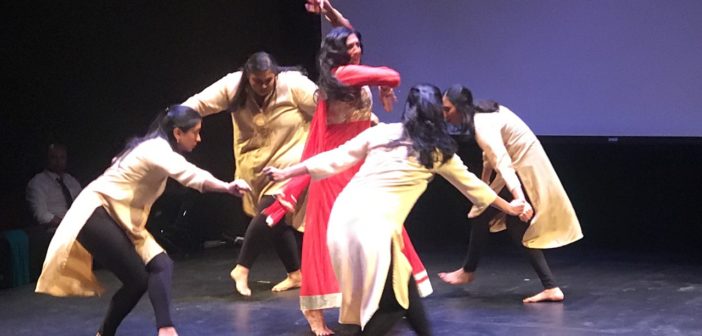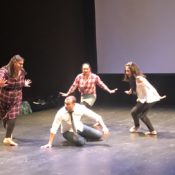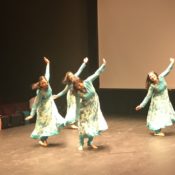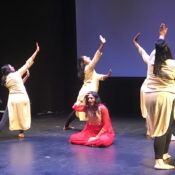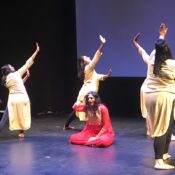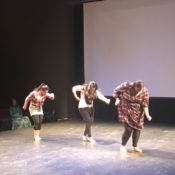“Feel it first, then ask questions.”
When every ligament of one’s body, from facials to finger movements, from foot placement to hand gestures is an effort to communicate a thought, a feeling, a presence and an identity, the choice to discuss the systematic marginalization of women in Indian culture through dance is obvious.
Formed in 2005 by Supna Chaudhari Jain, Aavegh Dance Troupe endeavors “to create dialogue on important societal issues through artistic expression while giving back to (the) community,” according to the organization’s official website.
“(The name Aavegh) means ‘passion’,” said Jain. “But it’s not a gentle term. It’s passion with a boldness.”
To commit an act with Aavegh is to do so with a fierceness, an integrity that transcends communicative practices and may best be expressed through the physicality of dance.
The theme of “The Making of a Bahu” centered on the expectations Indian women face when it comes to their adoption of the role of daughter-in-law.
Within dimensions of the Indian culture, there exists a stigma against unmarried women. Marriage serves as a status indicator. When a woman marries into her husband’s family, she must fit herself into the dynamic already established and, as an outsider, she is considered at the bottom of the power hierarchy.
How can an Indian woman reconcile the individual she has crafted herself to be with the subjugation and limited influence allotted to her through her new role as a Bahu? It is the exploration of this rhetoric that is ultimately at the crux of “The Making of a Bahu.”
The performance put on Jan. 19 was created in conjunction with research materials titled, “Making of the Hollow Bahu: The Web of Influence on Bahu Disempowerment,” written and soon to be published by Mara Berkland, Ph.D. and Jain, J.D. The goal of the in-depth, theatrical discussion of such concepts being to open up the dialogue regarding the marginalization of women and their subjugated roles within the Indian family context.
It was Jain’s confrontation with her own feelings of isolation and role-confusion that led her to develop this research.
“I felt like I was just a shell,” said Jain. This led to the endeavor to meet and explore with 10 other Indian women from varying regions and amongst varying age groups. Whether or not these feelings of hollowness amongst Indian daughters-in-law were a common thread.
The numerous interviews and interactions that contributed to “The Making of a Bahu” validated these shared experiences, invoking Jain’s earlier mantra for the audience to feel and empathize with this oppression before delving into its theoretical processes.
And yet, while the experience of a Bahu is specific to family dynamics within Indian culture, Jain said the North Central community and Naperville at large will still benefit from the performance.
“The experience I am presenting (of the marginalization of women) within this cultural context is so much more pervasive in our (culture at large),” Jain says.
Jain had hopes that this performative piece would allow viewers to recognize the perpetuation of these patterns in gender role behavior and expectations, calling attention to the changes still needed regarding equality and female empowerment.
Ultimately, allowing an opportunity for discussion, dialogue and expression is the cornerstone of the organization.
- Photos by Sam Loveland
- Photo by Sam Loveland

